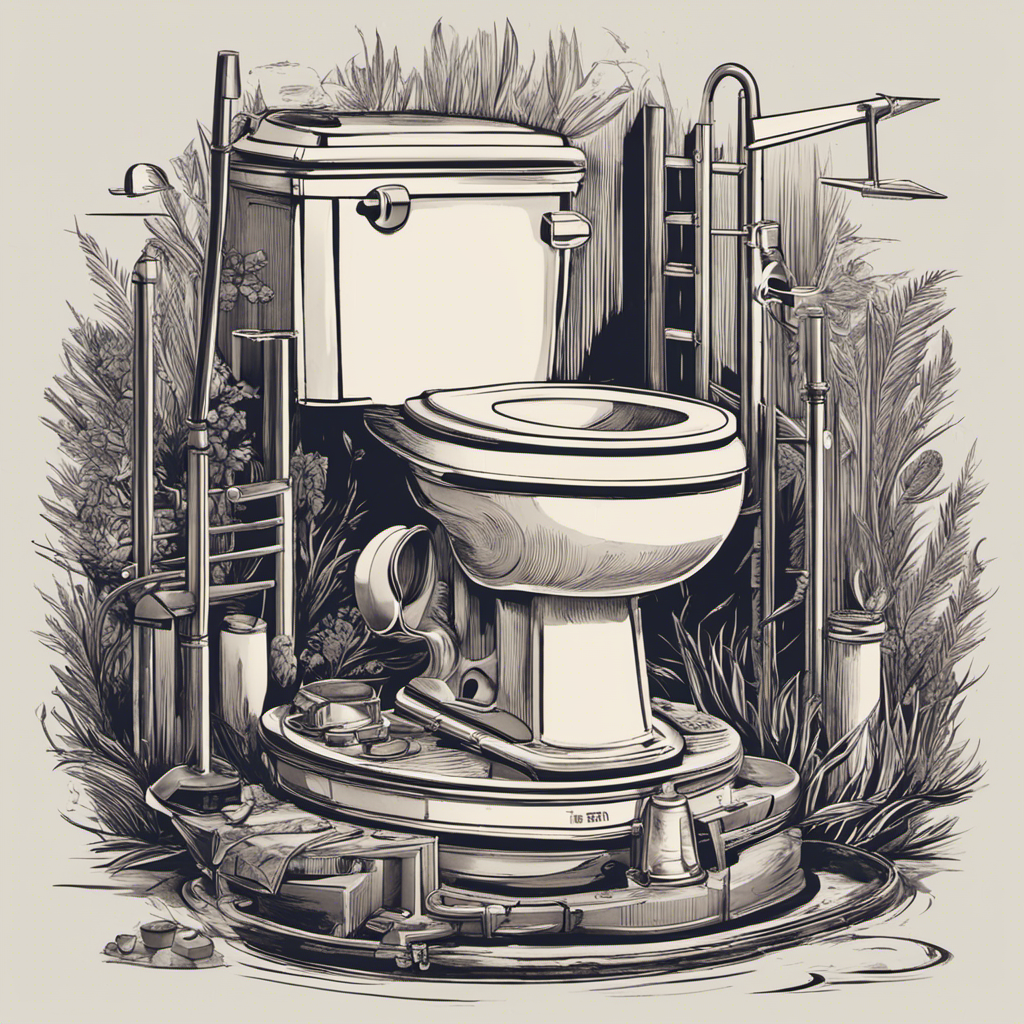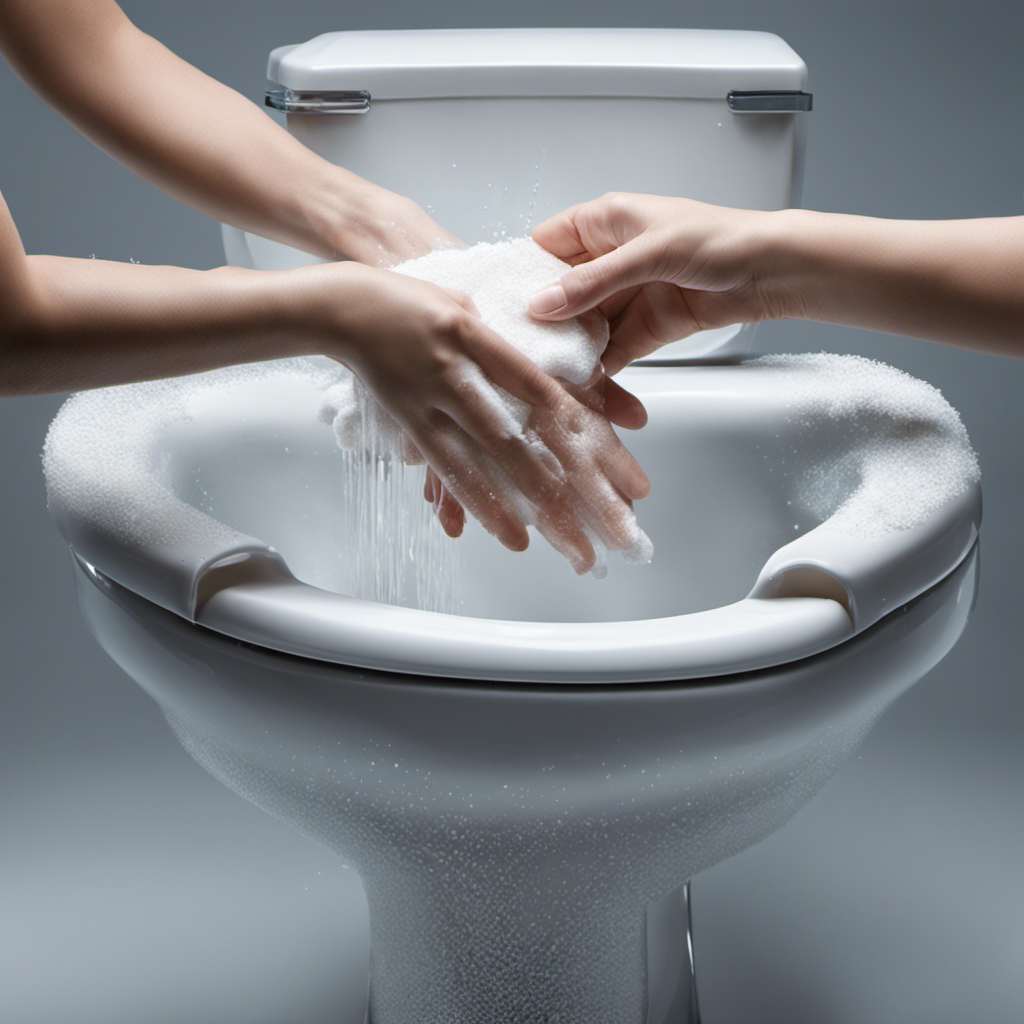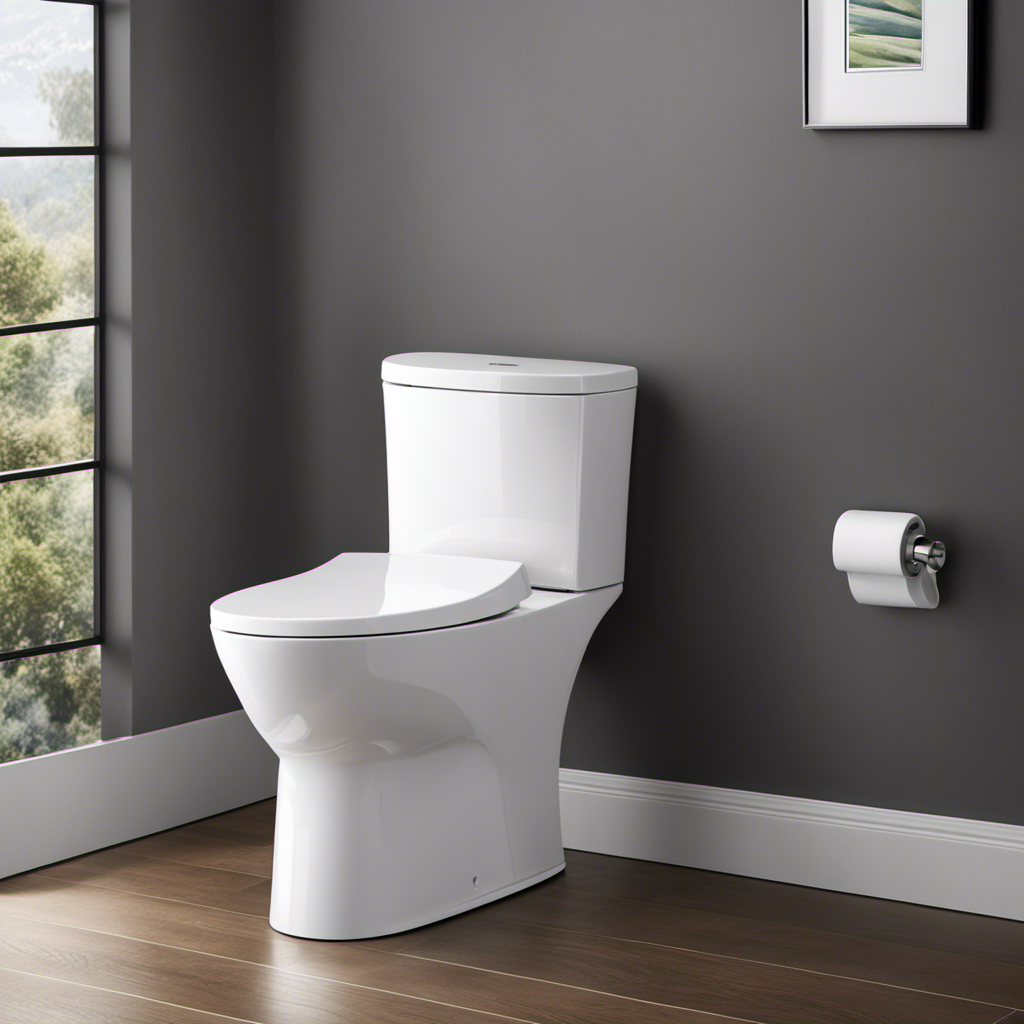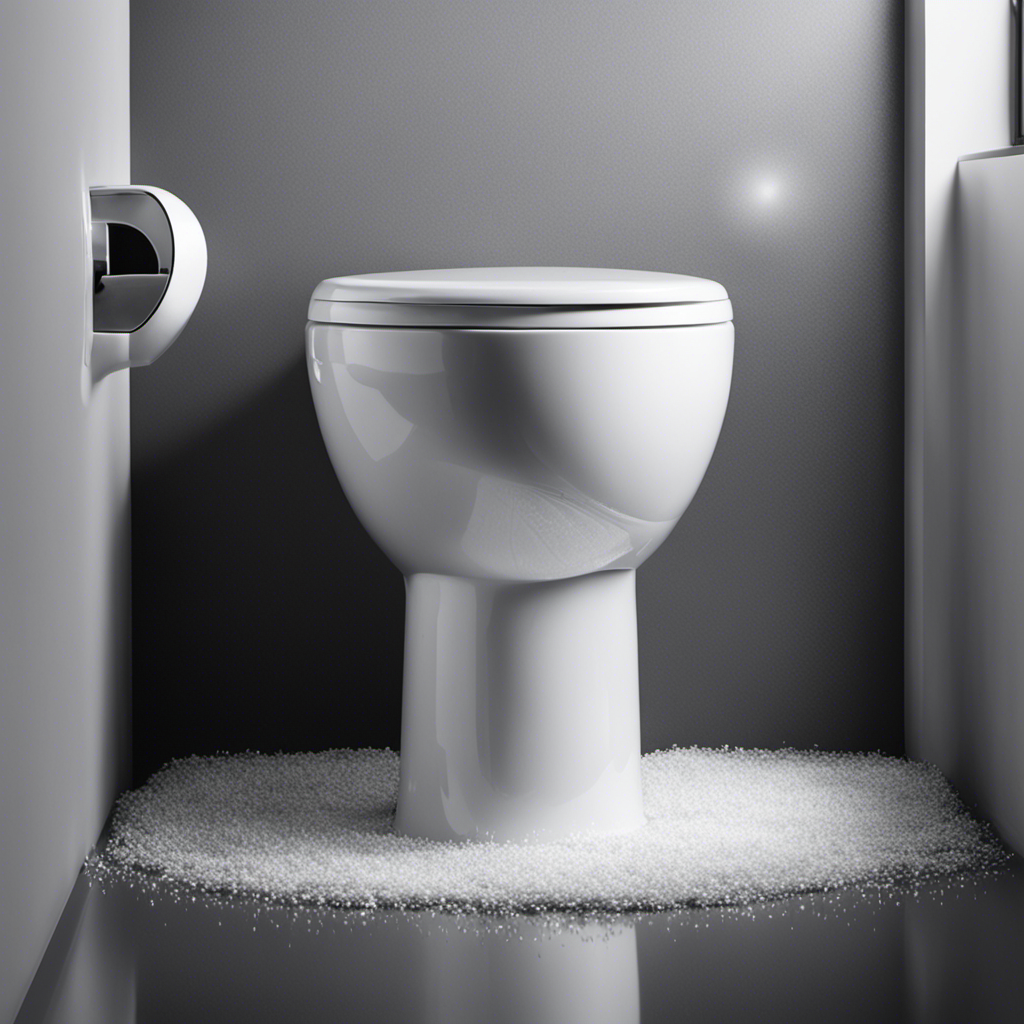Having a low toilet water level can be a frustrating and inconvenient problem. Imagine the frustration of constantly having to flush multiple times or dealing with a weak flush that leaves behind residue.
But fear not, because this article is here to help. It will explore the common causes of low toilet water level and provide detailed solutions for each issue.
With this knowledge in hand, you’ll be able to tackle the problem head-on and restore your toilet’s water level to its proper state in no time.
Key Takeaways
- Faulty position of the tank float can cause low toilet water level
- Broken fill valve can result in low water level in the toilet tank
- Malfunctioning toilet flapper can lead to low water level in the toilet bowl
- Partial clog in the air vent can cause low toilet water level.
Common Causes of Low Toilet Water Level
One of the common causes of low toilet water level is a faulty position of the tank float. When the tank float is set too low, it prevents the tank from filling up properly, resulting in inadequate flushing.
Troubleshooting low water pressure in the toilet requires checking for other potential causes as well. Cracks in the toilet bowl can also lead to low water level as the water slowly leaks out. A broken fill valve or toilet flapper can cause the tank to not fill up completely. Additionally, a partial clog in the air vent or a shutoff valve that is not fully open can restrict the water flow, resulting in low water pressure.
Solutions for Cracks in the Toilet Bowl
To solve cracks in the toilet bowl, the homeowner can replace the cracked bowl, close the water supply, empty the tank, and install a new one.
Here are the steps to fix a cracked toilet bowl:
-
Turn off the water supply: Locate the shut-off valve behind the toilet and turn it clockwise to close off the water flow.
-
Empty the tank: Flush the toilet to remove as much water as possible. Use a sponge or towel to soak up any remaining water in the tank.
-
Remove the old bowl: Disconnect the water supply line and unscrew the bolts securing the toilet to the floor. Carefully lift the bowl and set it aside.
-
Install the new bowl: Place the new bowl in position, ensuring it aligns with the floor bolts. Secure the bowl with the bolts and reconnect the water supply line.
Fixes for Toilet Tank Not Filling
The homeowner can resolve the issue of the tank not filling by replacing the toilet flapper or, alternatively, by replacing the fill valve.
When the toilet flapper is not working properly, it can prevent water from flowing into the tank, resulting in a low water level. To replace the flapper, the homeowner should close the water supply and empty the tank. Then, they can remove the old flapper and install a new one.
If the flapper replacement doesn’t solve the problem, the fill valve may be faulty. Troubleshooting the fill valve involves closing the water supply, emptying the tank, and replacing the old fill valve with a new one.
Solution for Blocked Air Vent
Unclogging the air vent can be achieved by using a garden hose to clean the vent and break up any debris. If there is water backflow, a toilet auger may be necessary.
To successfully unclog air vents and prevent future blockages, consider the following steps:
-
Identify the blockage: Determine the location of the clog by inspecting the vent pipe and looking for any visible debris or obstructions.
-
Use a garden hose: Attach a nozzle to the garden hose and insert it into the vent pipe. Turn on the water and let it flow through the vent, effectively flushing out any debris.
-
Break up the debris: If the water flow alone is not enough to dislodge the clog, use a long, flexible toilet auger to break up the debris and clear the vent.
-
Prevent future blockages: Regularly inspect and clean the vent pipes to prevent the accumulation of debris. Install vent caps to keep birds and rodents from nesting in the vents.
Fixes for Low Tank Float and Shutoff Valve Issues
Lifting the tank float to the desired position and fully opening the shutoff valve are effective solutions for low tank float and shutoff valve issues.
If the tank float is not rising high enough, it may need to be replaced. To do this, turn off the water supply, empty the tank, and disconnect the old float. Install the new float and ensure it is properly adjusted to the desired water level.
On the other hand, if the shutoff valve is not fully open, it may need lubrication. Spray some WD-40 on the valve and work it back and forth to loosen any debris or rust. This should allow the valve to fully open and ensure proper water flow into the tank.
Consequences of Low Water Level in the Toilet
When the water level in a toilet is low, it can lead to inefficient flushing and difficulty in properly disposing of waste. This can have several consequences, including health risks and water conservation concerns.
-
Health Risks: Low water levels in toilets may not provide enough water to effectively flush away waste, resulting in lingering odors and potential bacterial growth. This can pose health risks, as bacteria and germs can thrive in a poorly flushed toilet, increasing the chances of contamination and the spread of diseases.
-
Water Conservation: Low water levels in toilets can be a sign of water wastage. Inefficient flushing requires multiple flushes, leading to unnecessary water consumption. By addressing low water levels and ensuring efficient flushing, individuals can contribute to water conservation efforts and reduce their environmental impact.
Additional Tips and Tricks for Maintaining Proper Water Level
To maintain the proper water level in a toilet, homeowners can regularly check the tank float and shutoff valve to ensure they are functioning correctly. In addition to these basic maintenance steps, there are some additional tips and tricks that can help troubleshoot and maintain the water level in the toilet.
These include:
-
Adjusting the tank float: If the water level is consistently low, adjusting the tank float to a higher position may increase the water level in the tank.
-
Cleaning the tank: Over time, sediment and debris can accumulate in the tank, affecting the water level. Regularly cleaning the tank can help maintain the proper water level.
-
Checking for leaks: A leak in the toilet can cause the water level to drop. Inspecting the toilet for any leaks and repairing them promptly can help maintain the water level.
-
Consulting a professional: If troubleshooting and basic maintenance steps do not resolve the issue, it is recommended to consult a professional plumber for further assistance.
Frequently Asked Questions
Can a Cracked Toilet Bowl Cause Low Water Level in the Toilet?
Yes, a cracked toilet bowl can cause low water level in the toilet. When there is a crack, water may leak out, leading to a decrease in the water level.
What Are the Consequences of Low Water Level in the Toilet?
Consequences of low water level in the toilet include inefficient flushing, difficulty in clearing waste, and potential sewer odors. Fixes for this issue involve checking for cracks, adjusting the tank float, and ensuring the shutoff valve is fully open.
How Can I Fix a Toilet Tank That Is Not Filling?
To fix a toilet tank that is not filling, troubleshoot the low water level. Check the position of the tank float and ensure the shutoff valve is fully open. Replace the toilet flapper or fill valve if necessary.
What Should I Do if the Air Vent in My Toilet Is Blocked?
If the air vent in the toilet is blocked, it can lead to low water level. To fix this, one should unclog the vent by using a garden hose or a toilet auger to remove any debris.
How Do I Adjust the Tank Float and Open the Shutoff Valve Properly in Order to Fix Low Water Level in the Toilet?
To adjust the tank float and troubleshoot the shutoff valve for low water level in the toilet, start by locating the tank float and lifting it to the desired position. Then, ensure the shutoff valve is fully open.
Conclusion
In conclusion, low toilet water level can be caused by various factors. These include cracks in the toilet bowl, faulty tank float position, broken fill valve or flapper, partial clog in the air vent, or a shutoff valve not fully open.
However, fear not, as there are solutions for each of these issues. From replacing a cracked bowl to adjusting the float position or fully opening the valve, there’s a fix for every problem.
Remember, a toilet with low water level is like a ship without its anchor, so it’s crucial to address these issues promptly to maintain proper functionality.
Stay informed and keep your toilet sailing smoothly!










